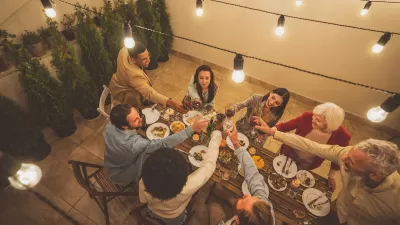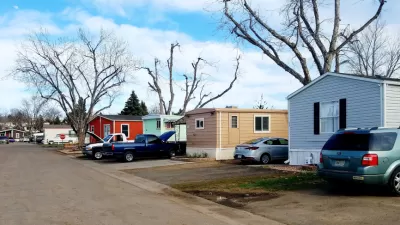Developers and buyers create new models for housing that hold the promise of a more environmentally friendly, connected, and multigenerational way of living.
Cohousing joins coliving, microhousing, accessory dwelling units, and other housing innovations that are meeting the evolving needs of individuals and families. Escalating housing prices, concerns about climate change, and a growing sense of loneliness and isolation are pushing people to reconsider how and where they live.
The residences of Takoma Village, located in Northwest Washington, D.C., flank a small common green that is open to the street. No fence separates the 43-home cohousing development from the single-family and commercial buildings that surround it.
“All of this was intentional,” longtime resident Alicia George says. “We wanted to be good neighbors.”
Being a good neighbor and living in community are essential values for people who choose cohousing projects like Takoma Village. In addition to the village green, the 1.4-acre (0.5 ha) development is anchored by a common house with a large communal kitchen and dining room, a children’s playroom, a cozy living room with a television and a bookcase full of puzzles, and a workshop. The 43 residential units range from one-bedroom apartments to four-bedroom townhouses. Completed in 2001, Takoma Village is the only cohousing project in D.C. In addition to other residences, it is adjacent to a juice bar, coffee shop, and community theater.
FULL STORY: Building Community with Cohousing

Study: Maui’s Plan to Convert Vacation Rentals to Long-Term Housing Could Cause Nearly $1 Billion Economic Loss
The plan would reduce visitor accommodation by 25,% resulting in 1,900 jobs lost.

Placekeeping: Setting a New Precedent for City Planners
How a preservation-based approach to redevelopment and urban design can prevent displacement and honor legacy communities.

Using Old Oil and Gas Wells for Green Energy Storage
Penn State researchers have found that repurposing abandoned oil and gas wells for geothermal-assisted compressed-air energy storage can boost efficiency, reduce environmental risks, and support clean energy and job transitions.

Washington State Plans Ambitious ‘Cycle Highway’ Network
The state is directing funding to close gaps in its existing bike network and make long-distance trips more accessible.

Homeowners Blame PG&E for Delays in ADU Permits
The utility says it has dramatically reduced its backlog, but applicants say they still face months-long delays for approvals for new electrical work.

Rethinking Wildfire Defense: How a Landscape Approach Can Protect Neighborhoods
Post-fire analysis of the Eaton Fire reveals that a landscape approach — including fire-resistant vegetation, home hardening, and strategic planning — can help reduce wildfire risk, challenging assumptions that trees and plants are primary fire hazards.
Urban Design for Planners 1: Software Tools
This six-course series explores essential urban design concepts using open source software and equips planners with the tools they need to participate fully in the urban design process.
Planning for Universal Design
Learn the tools for implementing Universal Design in planning regulations.
Borough of Carlisle
Caltrans
Heyer Gruel & Associates PA
Institute for Housing and Urban Development Studies (IHS)
City of Grandview
Harvard GSD Executive Education
Salt Lake City
NYU Wagner Graduate School of Public Service
City of Cambridge, Maryland





























